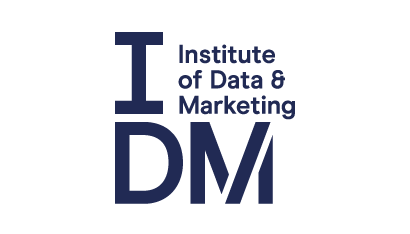How to create an effective social media advert
Create an effective social media advert with social media ad design tips for Facebook, Twitter, LinkedIn, Instagram and more.

If you want to reach a new, targeted audience quickly, a social media ad can make a huge impact. Moving from an organic social approach to putting real money on the table can feel intimidating, so it’s important to do your research before you start.
In this post, we’ll give you tips on using various types of social media ad to get results while maximising your budget. We’ll cover general social media ad design tips, as well as tips for specific social media platforms.




Which social media platform should I use for advertising?
When deciding where to position your adverts, determine which social networks are most popular with your target audience. Where is your target audience the most engaged, concentrated, and reachable? TikTok is ideal for targeting teens, whereas older generations are more likely to be active on Facebook.
Examine which social media platforms perform effectively for your brand organically. Where does your material naturally connect with your audience? This is where you should place your first social media ad campaigns.
How to advertise on social media – general tips
Before we dive into the individual social media platforms, here are some general social media ad design tips to help you out in the world of marketing.
Understand what you want to achieve
You’ll need to figure out what you hope to achieve with social media advertising; it’s difficult to reach your objectives if you don’t know what they are to begin with.
Understanding your business’ goals is crucial. It ensures that you promote on the appropriate social network; it assists you in selecting the appropriate advertising solution within that platform; it even directs your creative approach.
Understand your intended audience
For each social network, there are certain audience considerations. Each network provides very specific ad targeting. To get the most out of these targeting options, you’ll need to know who you’re attempting to reach. This ensures that you get the most for your money.
After all, advertising to teens on Snapchat is pointless if your target market is middle-aged professionals – LinkedIn would be more appropriate. One of the main advantages of social media advertising is that you can micro-target your ad campaigns. Creating audience personas might help you in determining which audience segments to target.
Consider what is more important: impressions or engagement
Consider whether you want impressions or engagements to keep your spending in check. If you pay for each impression of your ad, your message can reach a large audience. When you pay for engagement, though, you only want those who will further your company’s aims to engage.
Don’t spend money on engagements that aren’t relevant to your company’s objectives. Your ad’s wording should make it clear if it’s intended for them or not.
Your organisation can benefit from both engagement and impressions campaigns. All you have to do is select the best solution for your business objectives so that you only pay for actual results.
Allow your organic posts to guide your adverts
Every day, you’re probably sharing posts on social media. Some of these posts will be popular, while others will not. Keep track of which ones get the most clicks, likes, shares, and comments. These high-performing messages are ideal for social advertising.
Start modest if you’re expanding your social media advertising into a new network. As a starting point, consider what you’ve learnt from your organic posts. However, keep in mind that such lessons may not apply to all social media platforms.
Optimise the performance of your adverts by testing them
Instant feedback is one of the major advantages of social ads. Within minutes, you can assess the success of a sponsored post and follow up with comprehensive analytics data.
The best technique is to test numerous advertisements with limited audiences to see which ones perform best, then employ the winner in the main campaign.
A/B testing compares one ad to another to see which one performs best and adjust your campaign. It’s an important aspect of your social media marketing strategy.
Make your ads mobile-friendly
Over 3.25 billion people use their mobile device to access social networks. As a result, the majority of social media ads are viewed on mobile devices. Your mobile advertisements on social media should be optimised for the small screen: include photos that can be viewed on a pocket-sized device.
Use “geofencing” to show ads to mobile users while they are in a specific area if you operate a brick-and-mortar business. This means they only view your adverts when they are within walking distance of your front door.
Measure and report on results
Measuring success is just as crucial as knowing your goals before executing an ad campaign. This will tell you if you’ve met your objectives. It reveals what worked and what didn’t so you can do better in the future.
A significant aspect of establishing ROI is measuring your outcomes and having real statistics about the value your advertising provides to the organisation: purchases, leads and engagement.
If you can show that your advertising is paying off, you’ll be able to secure the funding you need to keep creating campaigns.
You can also measure results across networks using tools like Google Analytics and Hootsuite Impact. A social media report is a great method to keep track of your progress and discover great content to promote on social media.






Social media ad tips for specific platforms
Below are some tips on effective Facebook ad management. Following these, as well as the general tips above, will help you to create a Facebook ad library of effective ads that you can tweak and reuse.
- Use calls to action: For Facebook advertisements, a selection of call-to-action (CTA) buttons are available. These buttons grab people’s attention and encourage them to interact with your advertisement. Experiment with the CTA buttons available for different ad objectives and layouts based on what you what you want your audience to do. See which ones motivate people to act.
- Use movement: In Feed, ads that move stand out. You can utilise free templates to automatically animate your Stories ad when creating one. Colours, images, and fonts can all be changed.
- Using the Carousel format: Carousel lets you display many photos for visitors to browse through. If you have a lot of product or brand photographs, this is a great choice.
- Go vertical: Use a square or vertical aspect ratio. Because most people hold their phones vertically, you’ll be able to cover more of their display.
- Use less text on photos: To reduce the proportion of text to image, use a smaller font and fewer words when adding text to your image. Although there is no limit on the quantity of text you may include in your ad image, images with 20% text or less tend to perform better.
Facebook and Instagram are owned by the same company, Meta, so Instagram’s Ad Manager will look familiar to anyone well-versed in Facebook ad management. The principles of effective advertising are the same, but with a few platform-specific tweaks:
- Use videos instead of photos: Instagram made its name through photographs, but video also has a significant presence on the platform. Indeed, video may be critical to enhancing your ad performance.
- Instead of advertising, start organically: Test your material with your audience with organic posts. You can use the same images, videos, and captions in an ad once you’ve figured out what works best for your followers.
- Use Carousel: Carousel posts on Instagram receive the highest engagement of any other format; they have an incredible 1.92% engagement rate on average.
- Use audience targeting with “lookalike audiences”: Lookalike audience targeting capabilities started on Facebook and are now available on Instagram; these allow you to target people who behave similarly to those who have already engaged with your content.
- Join forces with an influencer: Instagram marketing is synonymous with influencers. Consider creating a partnered ad with a micro-influencer that your customers will recognise and trust.
Fast-moving Twitter requires a different approach from Facebook or Instagram. You’ll need to keep the Twitter ad specs in mind, which are unique to the platform.
- Keep your ads short: People will only look at your ad for a second or two while they scroll; write it like a billboard. The Twitter ad specifications state that your ad must be less than 280 characters long, but you’ll want to go far shorter.
- Use powerful images: Create eye-catching visuals with custom photographs or illustrations that consumers won’t see anywhere else. The image should complement the words to increase its impact.
- Make it timely: Use event targeting to peg your adverts to important events or holidays. In addition, keep an eye on what’s happening in the world and to find ways to incorporate current events into your brand. Avoid virtue-signalling, however; it’s easy to accidentally appear crass if you target a sensitive topic such as war, politics or race.
LinkedIn’s a targeting is better than most. Because professionals list all of their promotions and accomplishments on their profiles, your potential customer database is up-to-date and comprehensive. Members add their own job titles, business names, seniority, professional hobbies, and other information – a treasure trove for advertisers.
LinkedIn advertising provides a lot of targeting options, so you can make sure your ads are shown to the right people. You can store your audience as a template to use later in order to test the effectiveness of an ad against multiple audiences.
In terms of LinkedIn ad size, LinkedIn recommends keeping images to 1080×1080 pixels with a square aspect ratio.
Snapchat
Adapting your Snapchat ad for mobile is an important aspect of any Snapchat marketing plan, particularly when targeting millennials and Generation Z.
Including full-screen imagery and video in your adverts motivates users to engage and learn more. At the beginning, include a ‘hero’ message and any relevant offers or discounts to help drive consideration.
Keep your ad time between 5 and 6 seconds to mimic Snaps’ bite-sized and linear storytelling. This allows your business to reach out to potential customers in a way that feels natural and non-intrusive to Snapchat users, putting you right in the thick of their chats.
Pinterest ad specifications are similar to organic Pins: image based, with minimal text.
Vertical pins are an excellent way to fill as much screen real estate as possible with your message. Because only a few pins are displayed at a time on mobile devices, this practice will make your ads considerably more effective.
Pinterest suggests making your pin with a 2:3 or larger aspect ratio: 600×900 pixels minimum, 600×1560 pixels maximum.
Video ads are a fun and engaging way to tell your brand’s narrative and instantly attract customers’ attention. Keep your video brief and to-the-point, and begin with a strong opening or call to action. Ensure your video makes sense with the sound turned off, and use branding tastefully.
TikTok
Unlike other social media networks, TikTok requires you to be actively involved in order to keep up with the current trends. As a result, you should create relevant content that appeals to their target demographic – teens and young adults – using trendy hashtags and memes.
Choose one of three objectives in TikTok Ads Manager: Awareness, Consideration, or Conversion. You’ll need to use the right format for your company’s needs. Test your advert out on a small sample before committing to a large ad spend.
Final thoughts
More than anything, social media advertising requires a dose of authenticity; customers are more savvy than ever, and TikTok and Snapchat users in particular will be able to tell if you’re trying too hard. Keep your audience in mind, keep testing, and keep adapting – eventually, you’ll find a formula that works.
>> Discover our collection of online marketing degrees






